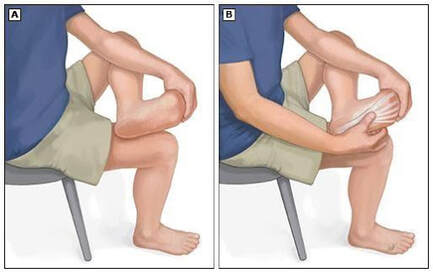- The plantar fascia is a strong connective tissue that runs from the heel of the foot and inserts on the bones that lead to the toes. The plantar fascia provides support for the arch of the foot and has a very important role in shock absorption.
- Plantar fasciitis is a condition affecting this part of the foot. It is typically a result of repetitive stress and strain on the plantar fascia, most commonly felt where the plantar fascia originates (ie: the heel), but can be painful in the surrounding structures and tissues as well.
- Pain in the bottom of your foot – typically near the heel, but can be elsewhere in the foot.
- Typically worse in the morning – with your first few steps.
- Pain often increases after prolonged walking or standing and can be worse after resting/sitting for prolonged periods.
- Age - Most common between the ages of 40-60
- Obesity.
- Occupation or type of activity/exercise. Prolonged standing, running, etc.
- Loss of ankle mobility (ie: post injury or trauma)

- Footwear: Ensure you are wearing supportive footwear. Providing support for the arch of your foot will help to alleviate the stress and strain on the plantar fascia that is aggravating the symptoms.
- Appropriate rest from the aggravating activity – Depending on severity, risk factors, etc. This may mean reducing the activity, modifying it, or eliminating it until symptoms are manageable.
- Ice the arch of the foot. Try using a bottle of frozen water and rolling the arch of your foot over the bottle for 5-10 minutes a few times /day. This can be beneficial for pain control.
- Tape/K-tape: talk to your therapist about trying some type of tape for the arch of your foot. This may help with controlling symptoms and allow for you to progress back to your activities or rehabilitation exercises more quickly and comfortably.
- Stretching. Add in a calf stretch (not shown) as well as a seated stretch targeting the tissues in the arch of the foot (Image A,B )three times per day.
- Strengthening. When symptoms are manageable, it will be important to introduce some progressive strengthening exercises. Talk to your physiotherapist about which exercises will be most beneficial for you and the best way to progress them.
Got more questions - drop us a call - we'd be happy to help.





















 RSS Feed
RSS Feed